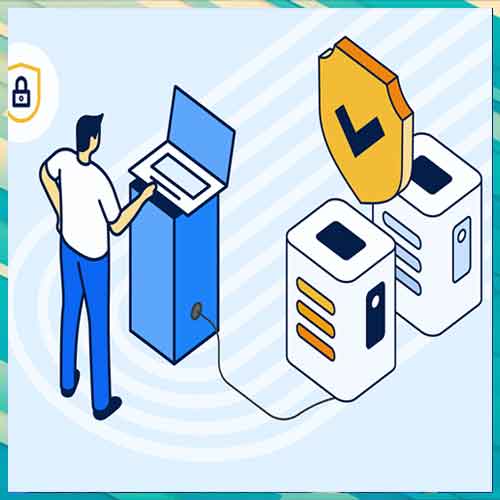
With a mission to deliver the best of technology to deal with the “Zero-Day” threat for a “carefree network and internet experience”, GajShield Infotech addresses major security challenges and delivers solutions for current and future needs. In a chat with VARINDIA, Sonit Jain, CEO, GajShield Infotech shares his thoughts on protection against cyber attacks, managing real-time cyber security, solutions to mitigate threats etc.-
Protecting remote workers from drive-by cyber-attacks
A 'drive-by’ attack, also known as 'drive-by download', is a cyber social threat that cybercriminals generate to surreptitiously sneak into your organisation’s data networks or to unload harmful viruses or malware in your systems. Sonit says, “Drive-by attack victims are initially lured into visiting infected websites through hidden links, text messages, emails, and other ways. Once a victim falls for the trap and visits the website, the aforementioned malware is downloaded onto their device, to devastating results. Drive-by attacks, generally, are caused due to the negligence of the employees working in your organisation. Such attacks can be dealt with easily with advanced data security tools.”
In today’s era of remote working, here's what organisations and their employees can do to prevent or mitigate the impact of such cyber threats:
Multi-factor Authentication systems
Organisations must use two or three-stage authentication systems to safeguard the cloud databases and operational networks. Tightening log-in controls with contextually aware security systems will be like shutting the digital door on the faces of most cybercriminals.
Rise of ransomware
These are the types of malware through which hackers extort money or information from their poor online victims. The biggest targets of this kind of cyber-attacks are financial institutions, schools and colleges as well as municipal corporations.
According to Sonit, for organisations, “Cybersecurity is a non-negotiable area of investment in order to protect their precious technical and financial data along with their IP content. Risks in cybersecurity can impact organisations at any point in time without warnings in advance. Such attacks and threats can be exceptionally difficult to handle once they are successfully executed by cyber criminals. Therefore, corporations must proactively manage cybersecurity risks to prevent cyber attacks. A specialised cybersecurity team in such organisations can create and regularly update a robust risk management plan.”
Steps organisations can take while managing real-time cybersecurity risks:
a. Ensure the detection of threats at an early stage
It can be assumed that an organisation has set up a dedicated cybersecurity team and has established frameworks and reference points for all the employees and other stakeholders to follow when a cyber attack takes place. Organisations must install and integrate proactive cybersecurity systems such as intelligent firewalls and advanced cloud security systems to nip the threat in the bud if it is detected in the early stages of a cyber attack.
b. Install ownership within employees
All the employees in the workplace must be aware of the things that are on the line if their employer is cyber attacked by hackers. As a result, they must know what steps and measures to implement at all times (regardless of whether an attack takes place or not). Essentially, employees must feel a sense of belonging to actually care for the organisation's cybersecurity.
c. Analyse the cyber threat
Before dealing with a threat, organisations must analyse it carefully. This step ensures that companies use the right number of resources to deal with a cyber threat. Analysing a potential cyber threat (or an ongoing attack) can be more challenging than dealing with its impacts. Analysing a cybersecurity risk involves a lot of data crunching and schematics. In this phase, organisations must also estimate the damages incurred due to a data security attack in the future.
d. Create risk mitigation plans
A risk-response mechanism is essential for organisations to deal with attacks when they take place. Firstly, organisations need to consider all their options regarding the mitigation process. Risk mitigation could be on a technical level or a human level.
e. Constant monitoring of various entities
Cybersecurity risks could be posed by internal as well as external drivers. This is why organisations must keep tabs on their employees, business partners, and other 'insiders'. Monitoring also includes continuous compliance with nationwide regulations regarding cybersecurity protocols.
Robust Solutions to Mitigate the Situation
GajShield’s Intelligent Sandboxing technique identifies malicious files and sandboxes in a virtual environment, away from the organization’s network to trap the injected malware/Ransomware. Sonit elaborates, “The ATP combined with advanced Machine Learning capability that finds outliers to identify suspicious traffic for further process by the security engines for preventing zero-day threats and keeping them away from the network. Today's viruses, Malwares, Worms and Trojans target the primary weakness in anti-virus technology: the time it takes for new signatures or heuristics to be developed and distributed. GajShield Next Generation firewall appliances, integrates Zero-Day Virus Outbreak Protection to shield enterprises in the earliest moments of malware outbreaks, and right through as new variants emerge.”
To Conclude
The Data Security Firewall uses Advanced threat protection as a solution that helps keep zero-day and advanced threats away from entering an organization’s network. These threats are usually engineered to be disguised as good traffic and evade security measures used by the target organization. These can be a malicious file, URL or a constructed mail for a planned attack. In his concluding lines Sonit comments, “GajShield zero-day protection overcomes the newer security issues witnessed, in which large quantities of Trojans and other viruses are being missed by traditional signature-based and heuristic antivirus engines increasing the risk for organizations.”
See What’s Next in Tech With the Fast Forward Newsletter
Tweets From @varindiamag
Nothing to see here - yet
When they Tweet, their Tweets will show up here.




























